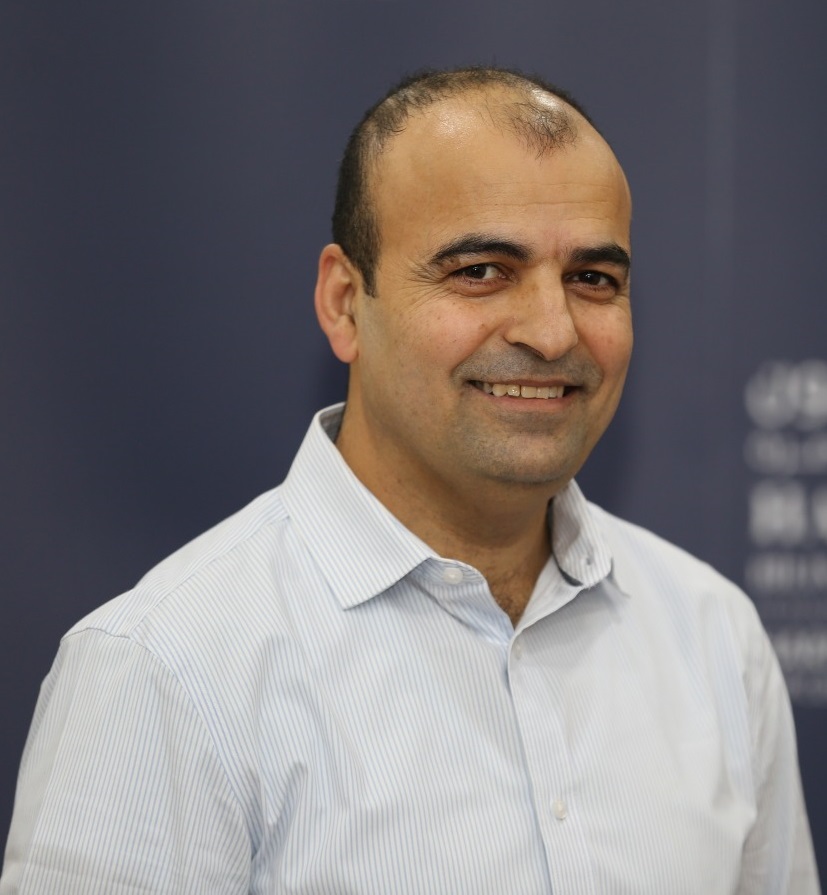The Lost Book of the History of Kurdistan
By Mohammed Shamdin
The book “The Lost Book of the History of Kurdistan” is an investigation conducted by the Russian historian Elena Vasilyeva into two manuscripts concerning Kurdish history: the manuscript of Mullah Mahmud al-Bayezidi titled “The New History of Kurdistan,” and the manuscript “The Nasiri Garden” by Mirza Ali Akbar Kurdistani. The translation from Russian to Kurdish (Sorani) was done by Mansour Sedki, and the book is one of the publications of the Kurdish Academy in the Kurdistan Region for the year 2023, comprising 241 pages in a medium-sized format.
This work presents an overview of Mullah Mahmud al-Bayezidi’s manuscript written between 1857 and 1858, entitled “The New History of Kurdistan.” On March 30, 1867, the Polish Orientalist and Kurdologist August Gaba wrote to the Scientific Academy to inform them about its content. He received both the Academy’s approval and praise from the Russian historian Lerch, who noted that it was a manuscript worthy of further research. On June 13, 1867, Gaba sent a translated version of the book’s 50-page introduction, accompanied by his own comments.
Elena Vasilyeva researched and investigated this manuscript, resulting in this booklet, which serves as an examination of the introduction to Mullah Mahmud al-Bayezidi’s work. Unfortunately, she could not find a complete copy of the book in August Gaba’s library. As a result, she titled this pamphlet “The Lost Book of the History of Kurdistan.” The Kurdish translation in Arabic script was included in the Dershi edition of Bayezidi’s translation of “Sharafnama,” and it was later republished in Latin script by Jean Dost and Avgi in “A Treatise on the Customs and Traditions of the Kurds.”
In addition to discussing the events Mullah Mahmud experienced while documenting this manuscript, the author relies on Sharaf Khan al-Badilisi’s “Sharafname” to connect these events, extending the narrative beyond the period covered in the “Sharafname.” Al-Bayezidi notes in the introduction that the manuscript is divided into 11 chapters, covering the period from 1785 to 1858 (the date on which the manuscript was written), which means it addresses the time following the completion of al-Badilisi’s “Sharafname.”
Content Breakdown
The eleven chapters sequentially discuss events that occurred in Erzurum from 1785 to 1857, the happenings in the Ruzki Alliance stronghold in the regions of Mosh and Bedlis, events in the Mahmudi areas centered around Khushab, occurrences in the Wan region, the Gülmerk/Hakkari region, the Rawanduz region, as well as in the Badinan and Amedi regions. Furthermore, the chapters cover events in the Bhutan and Jazir region, happenings in Silivan in the Bayezid region, and occurrences in Fars related to the Russian occupation, along with events in Azerbaijan, Khoy, Tabriz, Yerevan, Urmia, and Maku.
Political Life
One critical observation made by al-Bayezidi regarding the Kurdish reality is the absence of a capable Kurdish ruler to manage the conflicts of that time. Continuous wars occurred between the Mongol sultans, Seljuk sultans, Safavid shahs, and Russian tsars. These conflicts unfolded in the border regions of present-day Turkey, Iran, and Iraq, consistently placing Kurdish territories in the line of conflict. The Kurds often offered their services to one side or the other in exchange for marginal rewards. One of the most significant gains for the Kurds occurred when the Kurdish aghas and princes allied with Sultan Suleiman the Magnificent in his war against the Safavids, which led the Sultan to grant them hereditary rule over their respective regions (p. 34).
In this context, there is a notable account of a conversation between Sultan Suleiman the Magnificent and his mother:
– Sultan’s Mother: My son, why did you return and leave the region to the Georgians and the Qizilbash?
- Sultan: I established a strong barrier along the borders between the Ottoman Empire, the Safavid state, and Georgia such that no one can cross it.
- Sultan’s Mother: How did you manage this across such a vast border, and what did you construct it with?
- Sultan: I built the wall from flesh and blood; I entrusted the borders to the Kurdish tribes from Georgia to Baghdad and Basra, positioning a line of these tribes so that no one can cross the borders and threaten the State of Islam (manuscript p. 59/translated book p. 35).
The manuscript provides insights into the general characteristics of Kurdish tribes, noting that they honor their leaders, pledge loyalty, do not question decisions, and refrain from fighting one another in the presence of external enemies. Interestingly, the Kurds do not typically unite under one of their own to lead them; instead, they often agree to follow a leader from another ethnicity. For instance, an Armenian can become their leader without facing opposition.
Within each tribe, there is a fighting elite known as “shurkish” (fighters), who operate under the direction of the clan and defend it against other clans or outside forces while also managing peace and warfare with others (pp. 55-57). The Kurds are known for their combat experience, particularly in nighttime operations, as their lands have perpetually been battlegrounds. Additionally, Kurdish women actively participate in combat alongside men during times of war (pp. 64-65).
Like many Kurdish thinkers, al-Bayezidi suggests that if there had been unity among the Kurds, they could have established their own state (p. 66).
Linguistic Distribution in Kurdistan
Al-Bayezidi informs us, based on his experiences and observations in the areas he visited to document the distribution of Kurdish dialects (p. 36), that the language written and read by the Kurds is uniform; the words and alphabet are the same. However, in spoken conversations, notable differences arise, categorized as follows:
- Rwandan Dialect: Spoken by the Kurds of Galdiran (Galdir), as well as those in Kars, Bayezid, Mardin, Wan, the Kurds of Kharbut, Amed/Diyarbakir, and the nearby vicinities of Erzurum, including nomadic Kurds.
- Dialects of the Gulmarg Region/Hakkari, Bhutan, Khizan, Mukes, and Zebari: This dialect does not significantly differ from the Rwandan dialect.
- Dialect of Sulaymaniyah and Shahrzur: This dialect shows distinctions compared to the previous ones.
- Zaza Dialect: Spoken by the Kurds of Erzurum, Dersim, and Mount Aja, this dialect, known as Dudjook, Durdjuk, or dujik, differs markedly from the others. It is recognized as the ancient language of the Kurds. While they write in the Hakkari dialect, they converse in their own, and it is rare to find an educated speaker of Zaza (p. 38).
Al-Bayezidi notes that, despite the existence of these four dialects and their respective speaker populations, mutual understanding among them is feasible due to the common foundation of the dialects. He adds that the differences primarily lie in spelling and some vocabulary. Notably, the most renowned scholars among the speakers are typically those who use the Hakkari dialect, while literacy levels among nomadic Kurds are comparatively low (p. 39).
Social Structure
Al-Bayezidi provides an account of the social hierarchy among the Kurds, mentioning that settled Kurds held titles such as ‘mir’ (emir), ‘pasha,’ and ‘agha,’ and were associated with various sanjaks, including Gulmarg/Hakkari, Amed/Diyarbakir, Wan, Mosh, Badinan, Sharzur, and Bayezid. In contrast, the remaining areas were governed by those holding the title of ‘bey.’ Among the nomadic Kurds, there was no ‘bey,’ but only an ‘agha.’ Notably, only Tamur Pasha al-Mulli, the leader of the nomadic Mulliya tribes, was granted the title of ‘Iskan Pasha,’ as the Mulliya played a crucial role in the resettlement of nomadic tribes in the Raqqa region (p. 40).
The nomadic tribes in Azerbaijan are said to have originated from the Lorestan region, and many tribes found in Sivas and Mardin are remnants of the Rashwan and Mullah tribes. Additionally, Al-Bayezidi notes that the origins of the Maliya tribes include Yazidi clans that converted to Islam at various points in history (p. 41).
The tribes in Dersim adhere to Alawite Islam, distinguishing them from the Qizilbash. Meanwhile, the tribes in Mosul, Sharzor, and Baghdad practice Shafi’i Islam (p. 42). Among the Kurds, drinking and gambling are rare; however, those who have connections with Turks may sometimes engage in unsavory behaviors (p. 65).
Al-Bayezidi also mentions that the inhabitants of the Mosh and Bedlis regions, as well as those in Hakkari—whether urban or nomadic—are referred to as ‘Ruzki.’ In the Hakkari and Gezira region, they are known as ‘Koçer,’ while the inhabitants of the Amedi and Akre areas are called ‘Badinan’ (p. 44).
In more recent history, Al-Bayezidi elaborates on the period when the Salifani tribe, led by Badri Bey—who traces his lineage to the Marwanids, the rulers of Miyafarin—gained control over the Bayezid region, a power granted by Sultan Murad. Mulla Mahmoud notes that in the Sharafnama, the city was referred to as Alashkert. At the time of writing the Sharafnama, the city was under the control of the Bazuki tribe, but during the era of Mulla Mahmoud, governance shifted to the Jalalian and Haydaran tribes.
Mulla Mahmoud describes that the Kurdish tribes under Ottoman rule were categorized into three main sections: Milli, Zili, and Sipki. These groups further divide into various clans and tribes that have specific names. In contrast, the Kurdish tribes under Safavid rule are referred to as Goran and are subdivided into several other factions, including Afshar, Bayat, and Haideri, who speak Turkish despite being Kurdish tribes (p. 46).
In the Hakkari region, there are three large nomadic tribes, each consisting of approximately 15,000 families: Artushi, Banyanshi, and Khani. In the island of Botnan, there are five significant clans: Dershoi, Haji Ali, Miri, Alagi, and Dodiri. In Amedi, three prominent clans are present: Zebari, Mazuri, and Harki. In Diyarbakir, the Malilla, Qarjawi, and Silvani clans are mentioned. In Wan, the Shekaki and Shekafti clans exist, while in Mosh and Bedlis, Hasanli and Jabranli clans are found. Although there are no Kurdish tribes in the Erzurum region, Kurds from other regions reside sporadically in villages within that area.
In Kurdistan, there are approximately 70,000 Armenian families, 15,000 Nestorian families, and 200 Jewish families (p. 49). These communities speak Kurmanji Kurdish and enjoy a life of freedom and peace; they are also known for their fierce warrior spirit (p. 50). The original manuscript details the Yazidi tribes, noting their locations and names, and distinguishes them from the Yazidis of Shingal (Sinjar) and Mosul, referring to the latter as “Yazidkhan.”
However, despite Mullah Mahmoud’s reliance on the “Sharafnama,” his observations diverge significantly from those presented in that work. While “Sharafnama” portrays the Yazidis in a positive light, Mullah Mahmoud expresses negative sentiments towards them and raises the alarming notion that, in the eyes of Muslims, killing Yazidis is legitimate. This perspective may stem from the fatwas issued against the Yazidis in the period following the writing of the “Sharafnama.” Consequently, this distinction highlights the contrast between Mullah Mahmoud’s views and those of al-Badilisi, the author of “Sharafnama.”
From the information presented in the introduction, it is evident that Mullah Mahmoud al-Bayezidi offers a distinctive historical work rich in details about the Kurds and the political, social, cultural, and economic life of their various communities. According to [Basil] Nikitin, the renowned Russian orientalist Vladimir Minorsky managed to recover several unpublished works of Jaba (as noted in the original), which were said to be lost, having been provided with all the remaining documents and linguistic notes by Jaba’s descendants. However, it appears that he was unable to publish any of these materials.
If this is indeed the case, there remains hope that a modern account of al-Bayezidi’s history may someday be discovered. Locating this manuscript would significantly clarify Kurdish history, particularly in the period following the collapse of the Kurdish emirates and the rise of the Kurdish bureaucratic class, of which Mullah Muhammad al-Bayezidi was a prominent member, as indicated in the biography. Undoubtedly, this book will play a crucial role in understanding the emergence of Kurdish nationalist thought.




Comments are closed.